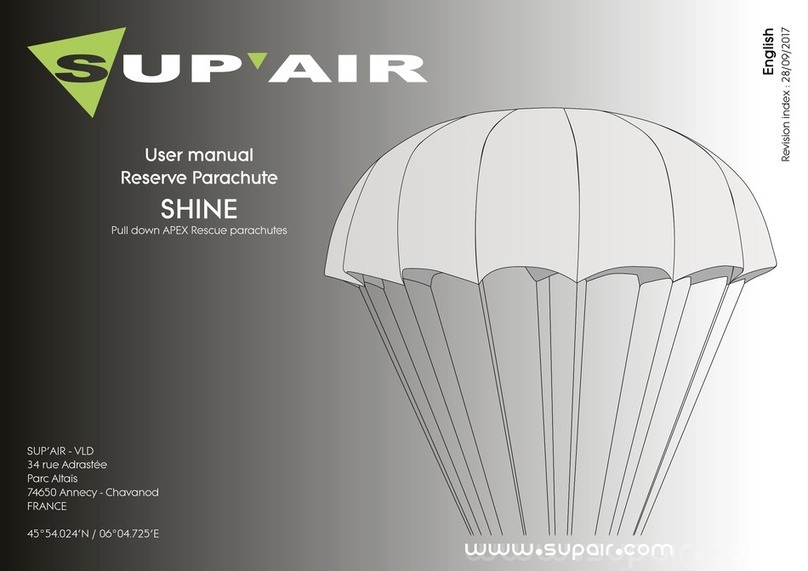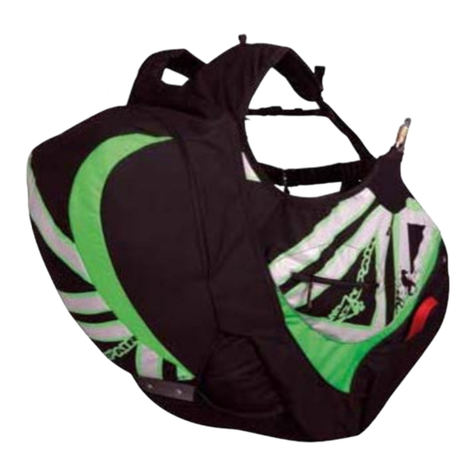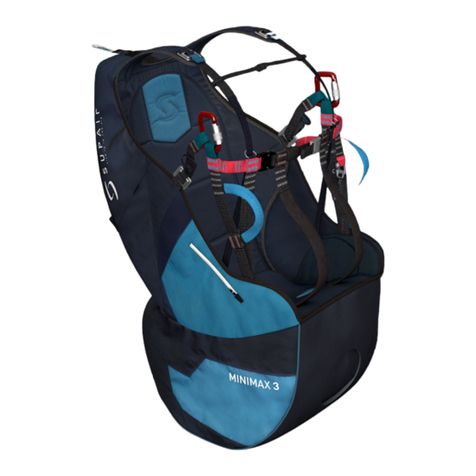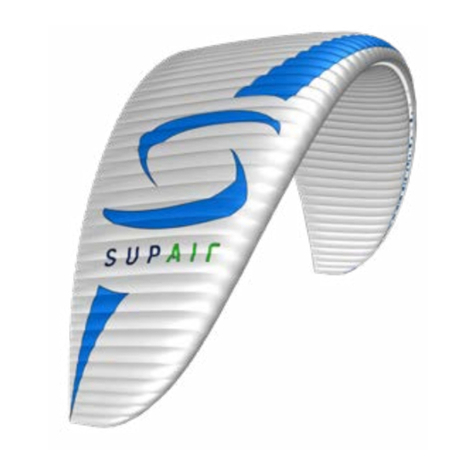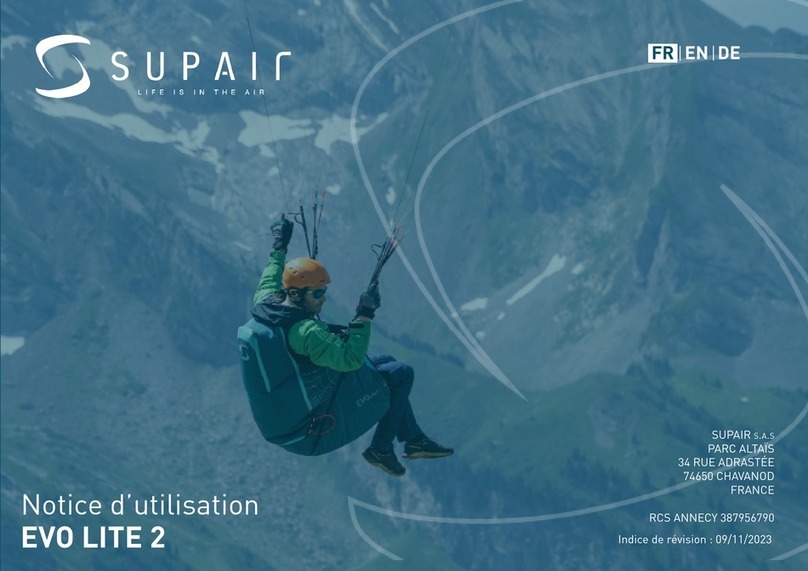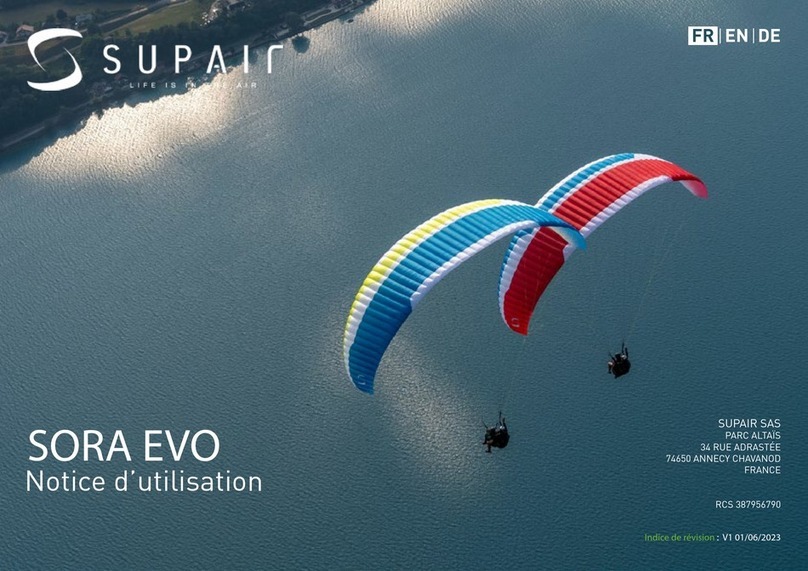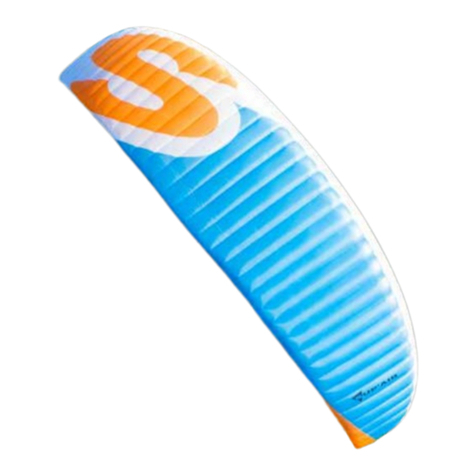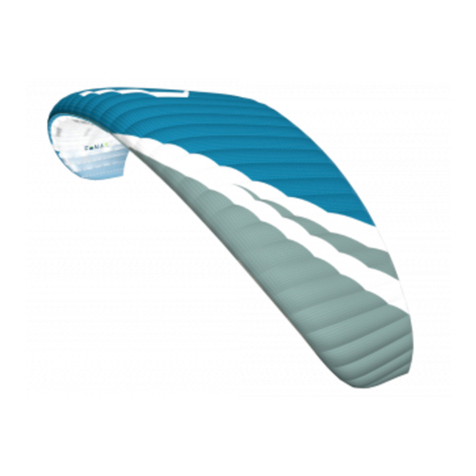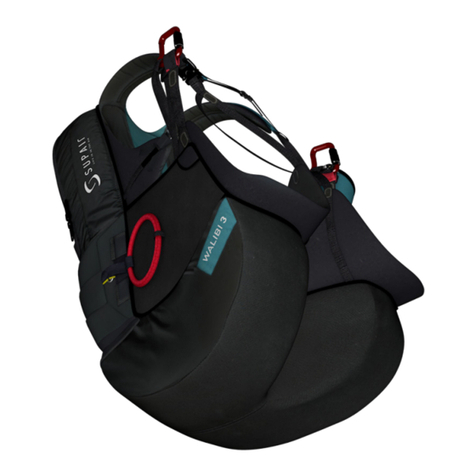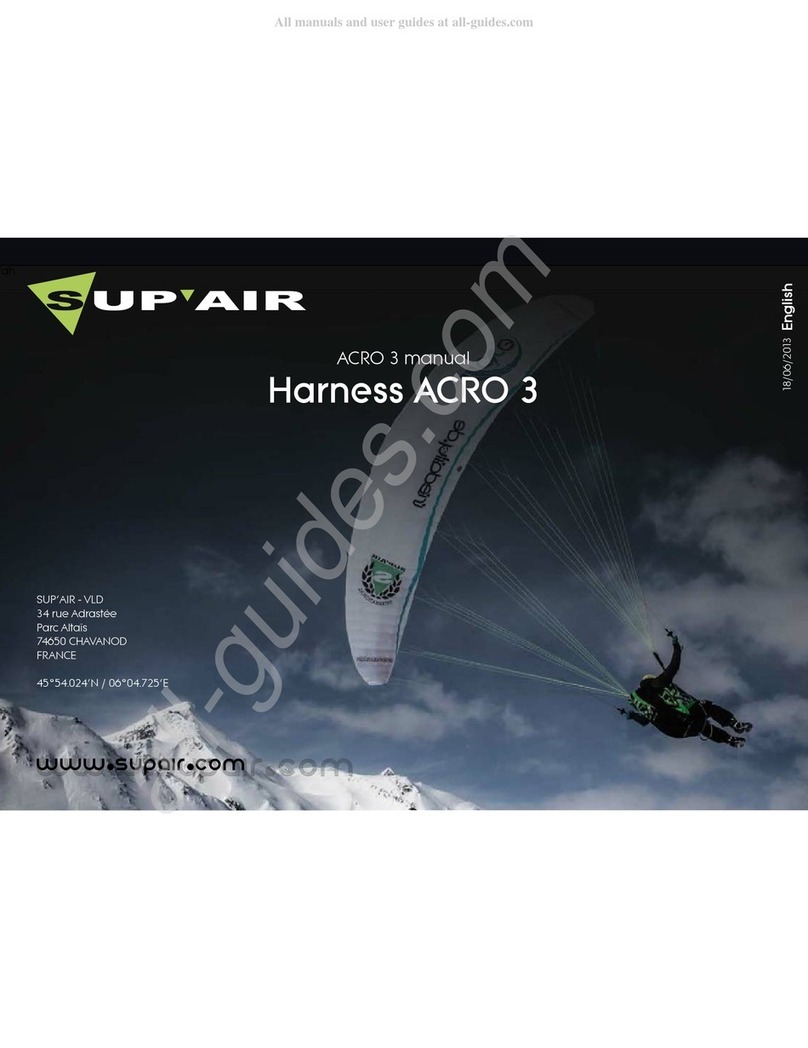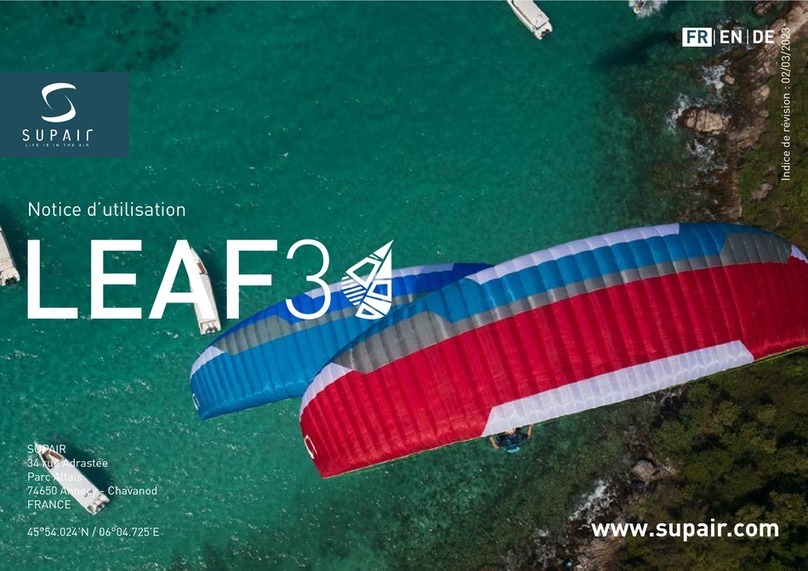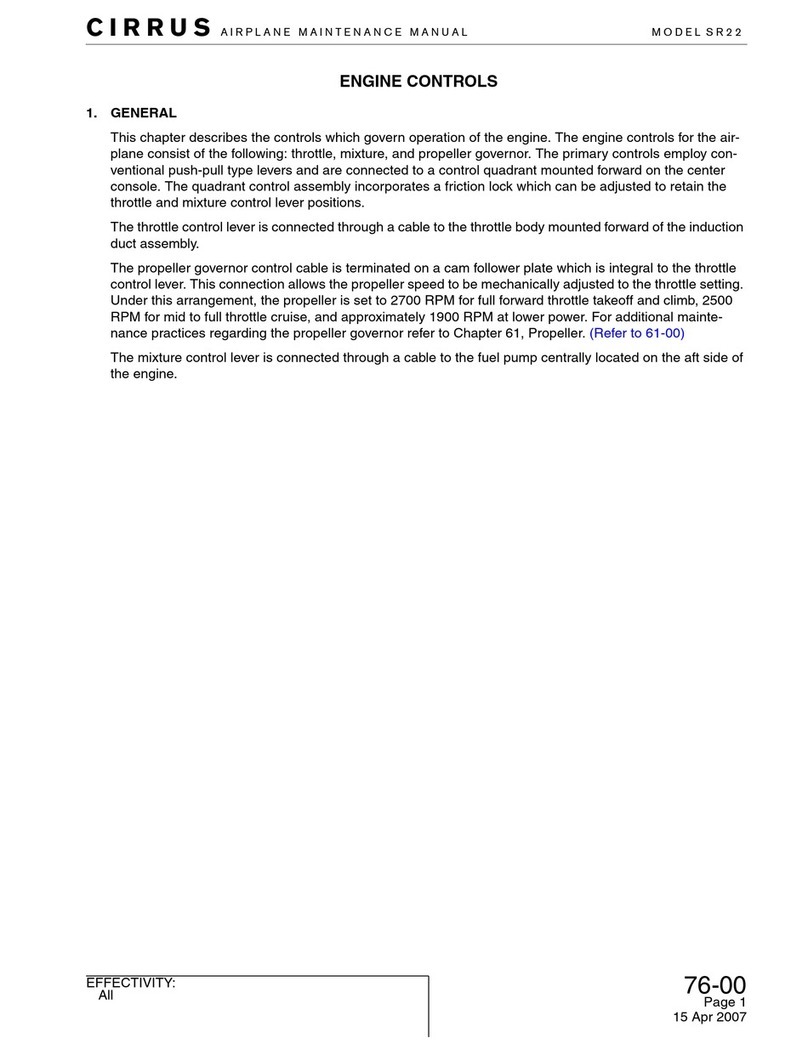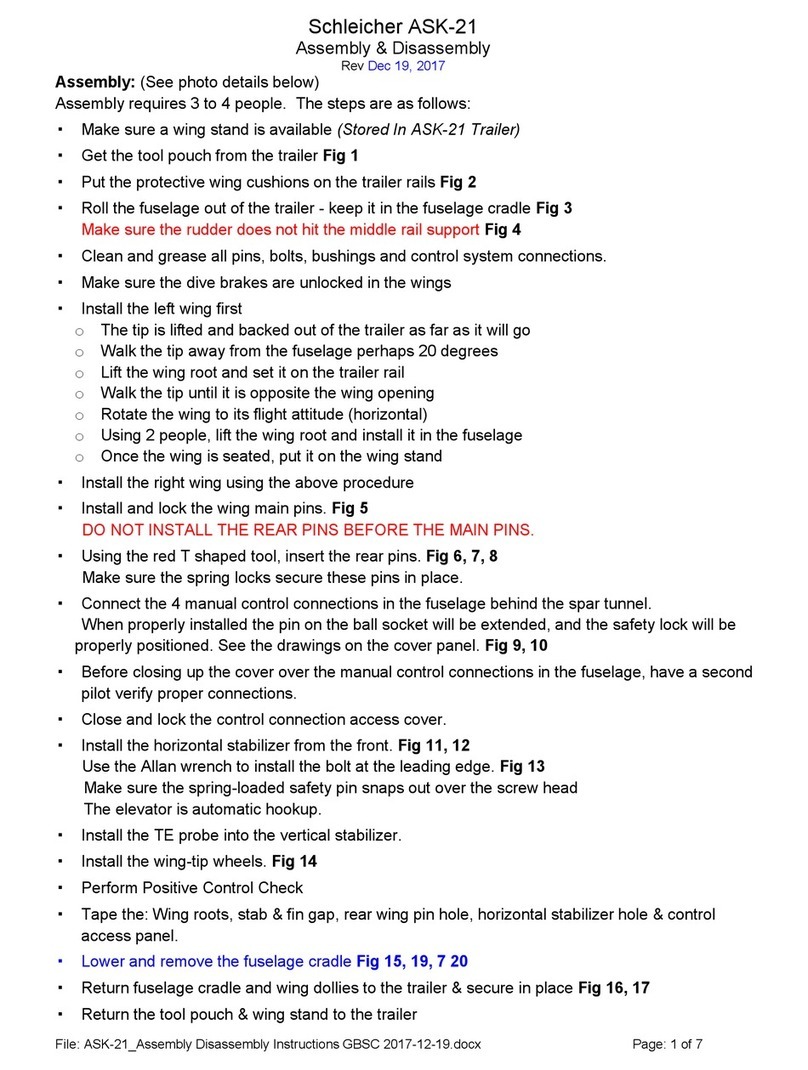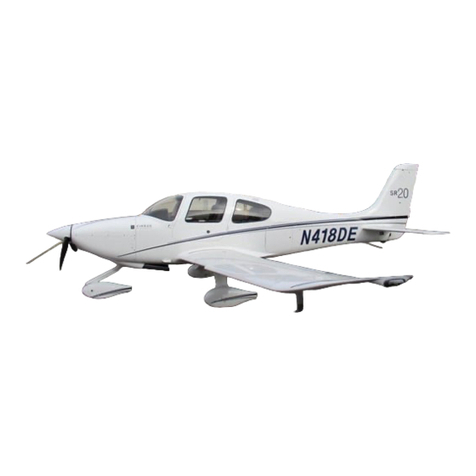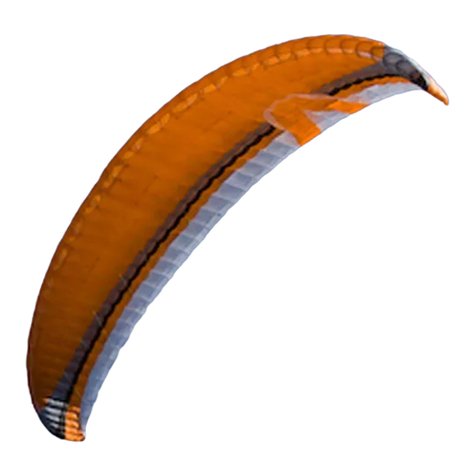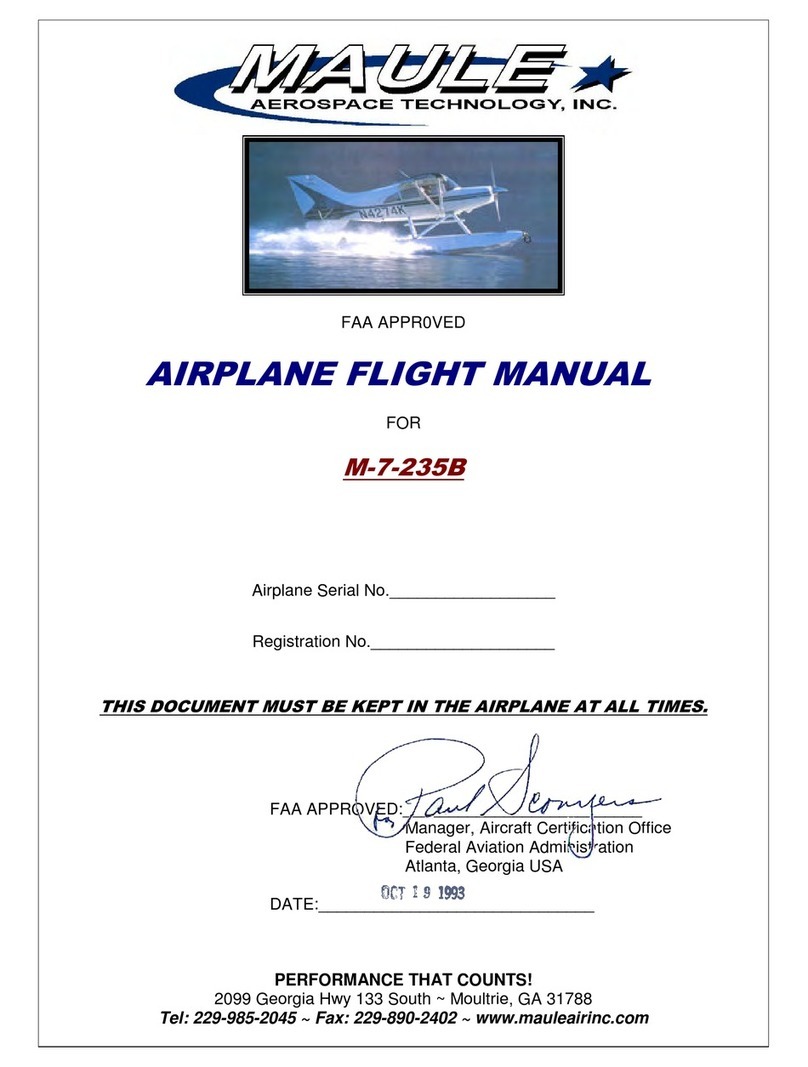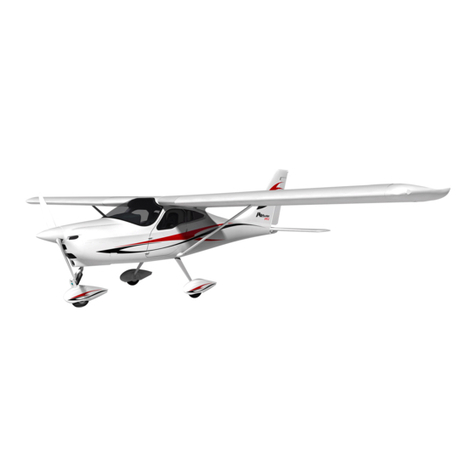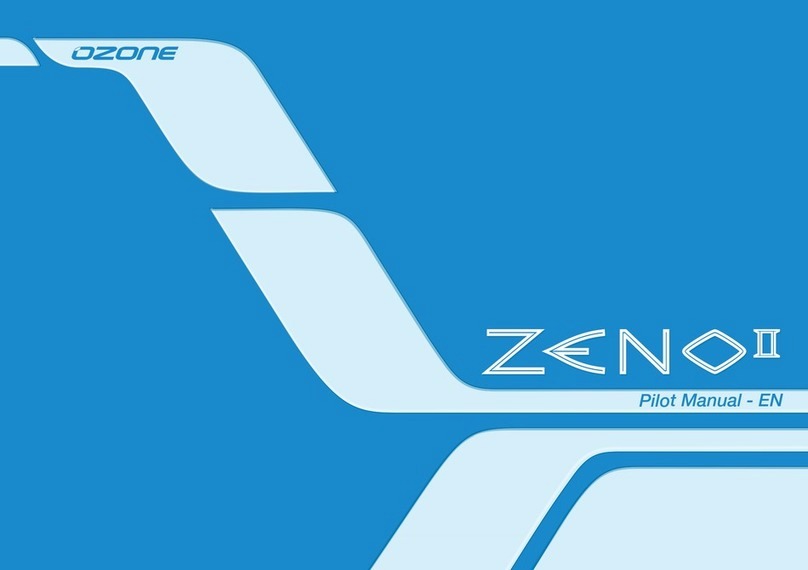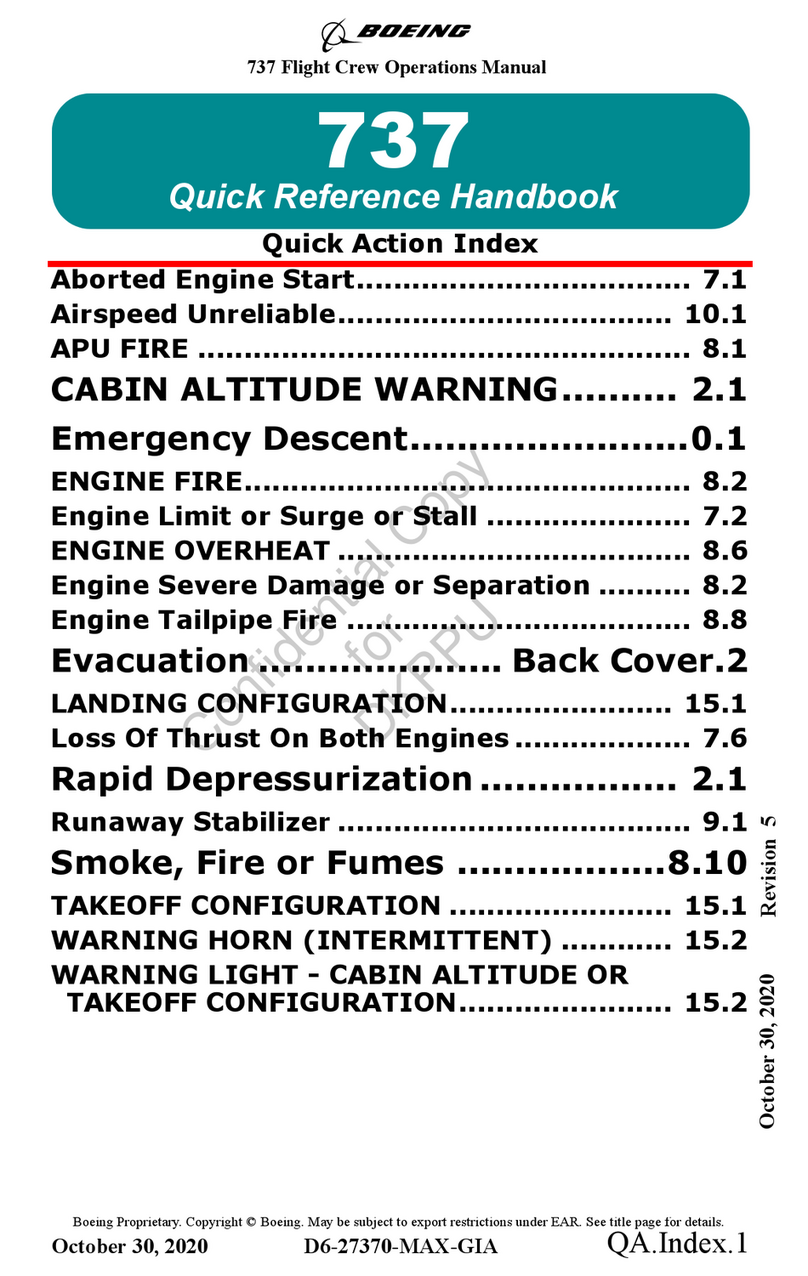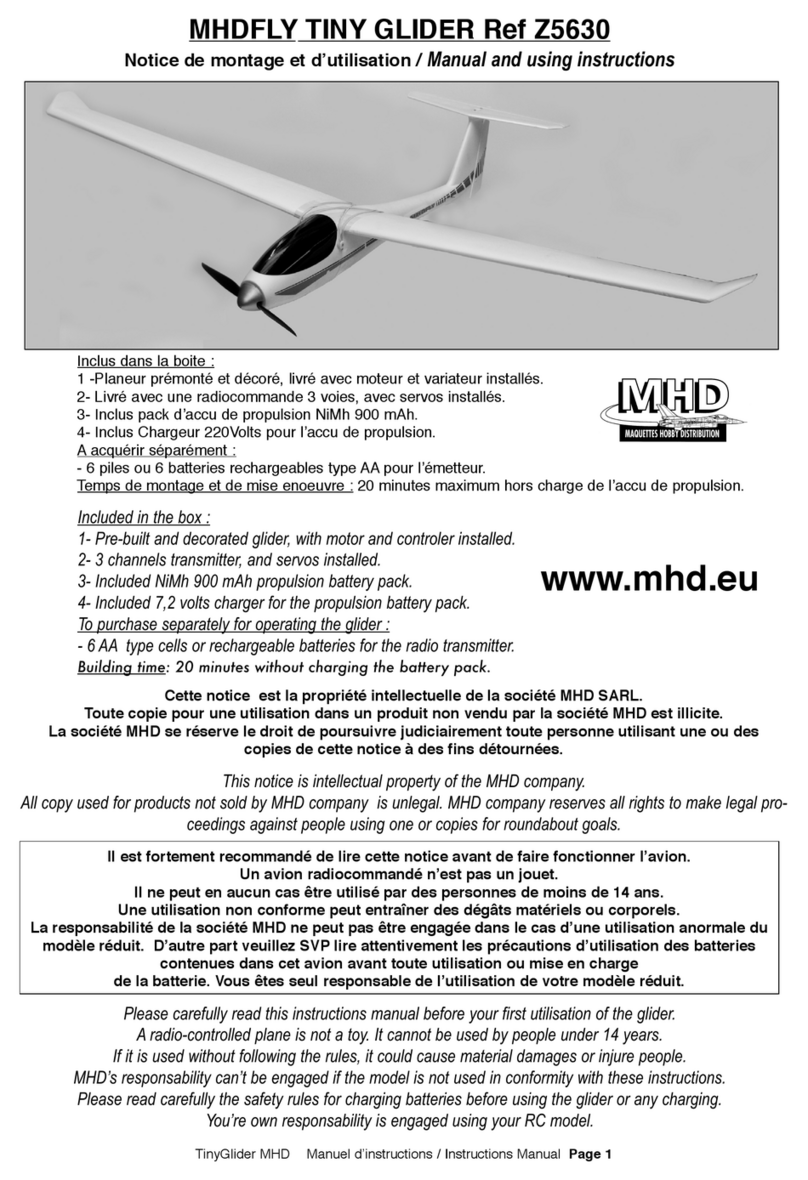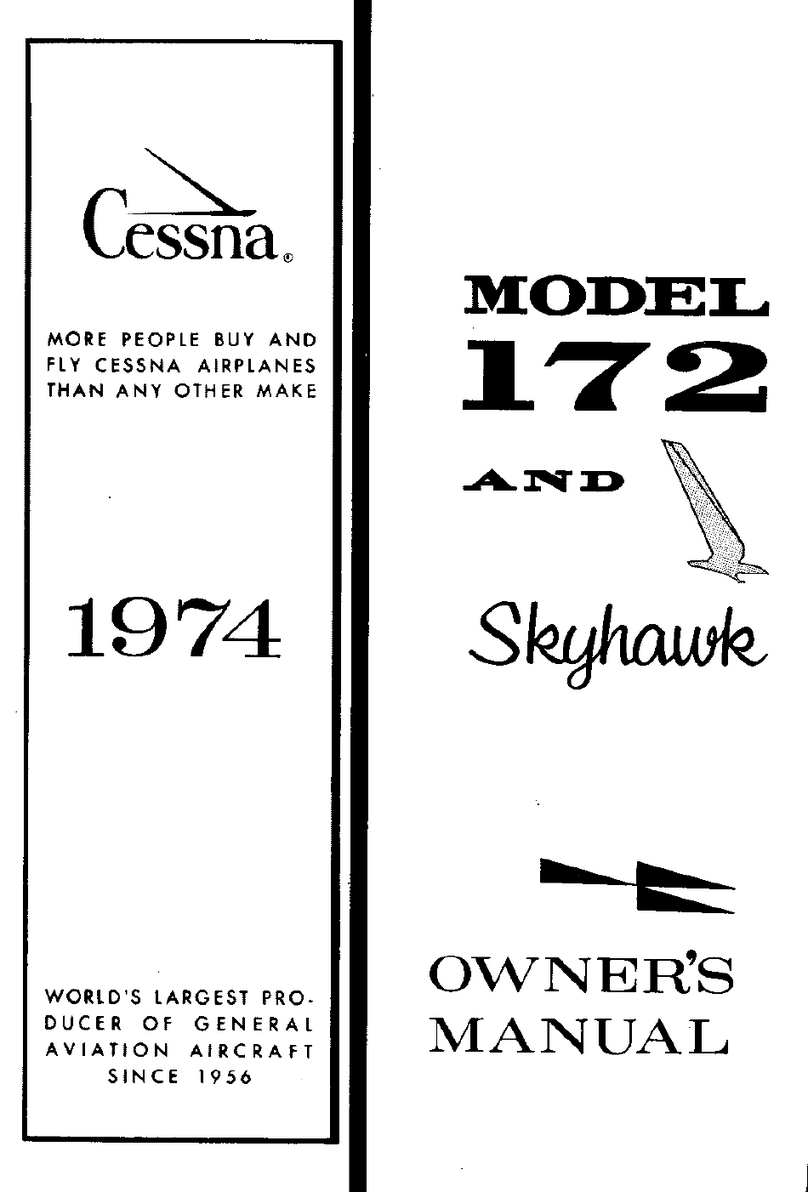Connecting the glider
Opening the wing
Without twisting the risers, connect them to the harness connection loops using the self-
locking carabiners.
Check for the risers to be properly positioned and untwisted. The "A" risers must be loca-
ted at the front and facing the flight direction( see schematic ).
Lastly, check for the main self-locking carabiners to be fully closed and locked in place.
Risers
Self-locking
Carabiners
Harness : Flight direction
Choosing an adapted harness.
It is advised to adjust the harness's chest strap width based on your wing size :
38 cm for an EONA size XS
40 cm for an EONA size S
42 cm for an EONA size M
44 cm for an EONA size
Install the accelerator according to your harness manu-
facturer's recommendations.
Connect it to the wing using the split hooks.
Once the accelerator/speedbar is connected, adjust
its length according to your measurements. For correct
use, there must not be any tension at the split-hook
level when the accelerator/speedbar line is relaxed.
Red : left riser
Green :
right riser
Choose a flat or lightly angled training hill without obstacles or wind.
Open your wing and arrange it in a crescent shape.
Check the fabric and the lines for any sign of wear or damage. Check for the links
connecting the lines to the risers to be fully closed. Identify, separate and arrange the
A,B.C, risers as well as the brake lines neatly. Knots or tangles can not be present.
The EONA glider was certified EN A with a EN1651 & LTF certified harness and hence can
be flown with most harnesses models found on the market today. We wil advise you to
choose a EN1651 and or LTF certified harness with a built-in dorsal protection system.
Connecting the wing to the harness.
Harness chest strap spacing
Installing the accelerator
